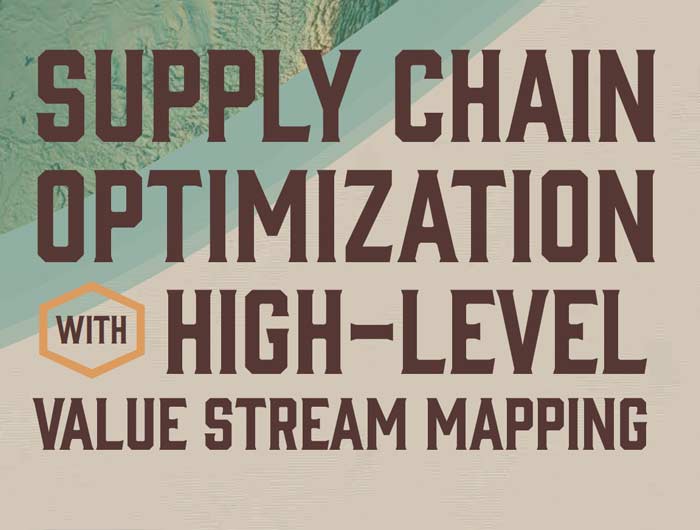Global supply chains have faced unprecedented challenges in recent years, from natural disasters and geopolitical tensions to pandemics and economic downturns. To navigate these complexities and build a resilient supply chain, organizations must adopt a strategic and proactive approach. Drawing on key insights from ASCM Insights blog content, following are 10 essential strategies — and how to get started — so you can significantly enhance your supply chain’s resilience:
1. Digital transformation: To build a resilient supply chain, organizations must embrace digital transformation. Implementing advanced tracking and monitoring systems, such as IOT devices and RFID, provides real-time visibility into the movement of goods. Leveraging AI-powered analytics can help forecast demand, identify potential disruptions and optimize inventory levels. Additionally, creating a digital twin of the physical supply chain allows for simulation of different scenarios and testing responses to potential disruptions.
Get started by implementing a pilot program to track a specific product or material using IOT- or RFID-enabled devices and analyzing the data to identify bottlenecks or inefficiencies.
2. Diversification: To mitigate risks associated with single-source dependencies, supply chains must diversify their networks. By sourcing materials and components from multiple suppliers in different geographic regions, companies can reduce vulnerability amid political instability, natural disasters or economic fluctuations. Regular supplier risk assessments can help identify and mitigate potential issues including financial instability, quality problems or ethical concerns.
Get started by conducting a supplier risk assessment to identify potential hazards, then develop a plan to diversify sourcing for at least one critical component.
3. Resilient workforce: A resilient supply chain depends on skilled and engaged people. Investing in continuous training and educational programs equips your teams with the necessary skills to adapt to ever-changing conditions. Further, fostering a culture of collaboration and innovation improves decision-making and problem-solving. And implementing employee retention strategies can help minimize talent loss and ensure stability.
Get started by developing a training program focused on supply chain resilience and offering it to key personnel.
4. Visibility and transparency: Data-driven decision-making is crucial for effective supply chain management. By leveraging data analytics, industry professionals can identify trends, patterns and potential disruptions. Meanwhile, collaborative platforms facilitate information sharing and communication among supply chain partners, improving transparency and coordination. Also, blockchain technology can enhance transparency, traceability and security by providing an immutable record of transactions.
Get started by establishing a centralized control tower — this single source of truth for all supply chain data will enable better decision-making and support team collaboration.
5. Risk management: To succeed, all supply chain organizations must proactively identify and mitigate risks. Regular risk assessments, comprehensive business continuity plans and dedicated crisis management teams are essential. Scenario planning and risk transfer strategies can further enhance resilience. By proactively addressing potential threats, networks will be well-positioned to minimize disruptions and ensure business continuity.
Get started by developing a business continuity plan for at least one major disruption scenario; learn from this experience and expand as needed.
6. Strong supplier relationships: Building strong, collaborative relationships with suppliers is vital. By working closely with suppliers, organizations can more effectively share information, address challenges and improve performance. Supplier performance management programs helps ensure quality, delivery and cost-effectiveness. Additionally, promoting supplier diversity can reduce risk and access a wider range of capabilities.
Get started by establishing a regular communication cadence with key suppliers and conducting joint performance reviews.
7. Supportive ecosystems: Information-sharing and collaboration with your supply chain colleagues around the world is essential for building a resilient supply chain. Learning from each other brings about joint problem-solving and coordinated efforts to address ongoing challenges. By working together, professionals can more easily identify and mitigate risks, improve efficiency, and enhance overall supply chain performance.
Get started by joining an industry association to network and begin collaborating with your supply chain colleagues.
8. Sustainable and ethical supply chains: Sustainable and ethical practices are a critical element of building long-term resilience. Adopting sustainable sourcing practices, reducing carbon emissions and minimizing waste helps you mitigate environmental risks and enhance brand reputation. Additionally, ethical sourcing and fair labor practices can strengthen relationships with suppliers and customers.
Get started by mapping out your supply chain to identify key stages and potential impact areas, such as resource extraction, manufacturing, transportation, and end-of-life; then, identify areas where you can take action.
9. Enterprise architecture: Enterprise architecture plays a crucial role in building resilient supply chains by providing a holistic view of IT systems, business processes and data flows. This strategic tool maps the relationships between software applications, business processes and users. By visualizing these connections, organizations can identify inefficiencies, risks and opportunities; improve agility; reduce costs; and enhance overall supply chain performance.
Get started by conducting an IT audit to identify potential vulnerabilities and develop a plan to improve the resilience of your systems.
10. Learning from the past: Supply chains must learn from past disruptions in order to prepare for future challenges. Organizations should conduct regular risk assessments, develop comprehensive business continuity plans and simulate potential disruptions to test their resilience. By continuously learning and adapting, you will be able to build more resilient supply chains that can withstand future shocks.
Get started by providing regular training for employees in conducting post-mortem analyses, risk management and crisis response in order to identify key lessons learned.



